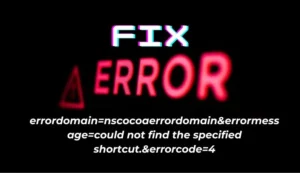which of the following is not a creative thinking exercise entrepreneurs use to generate ideas?hip thrives on innovation, and creative thinking lies at the heart of generating groundbreaking ideas. which of the following is not a creative thinking exercise entrepreneurs use to generate ideas? often employ a myriad of techniques to stimulate their creative faculties and uncover novel solutions to complex problems. However, not all methods yield the same results. In this article, we’ll delve into the realm of creative thinking exercises used by which of the following is not a creative thinking exercise entrepreneurs use to generate ideas? to generate ideas, with a particular focus on identifying one technique that stands apart from the rest.
The Essence of Creative Thinking in which of the following is not a creative thinking exercise entrepreneurs use to generate ideas?
Before delving into specific exercises, it’s crucial to understand the significance of creative thinking in which of the following is not a creative thinking exercise entrepreneurs use to generate ideas?hip. Creative thinking enables which of the following is not a creative thinking exercise entrepreneurs use to generate ideas? to break free from conventional wisdom, challenge the status quo, and envision new opportunities in the market. By fostering a culture of innovation, which of the following is not a creative thinking exercise entrepreneurs use to generate ideas? can transform abstract concepts into tangible realities, driving growth and success in their ventures.

In the dynamic world of which of the following is not a creative thinking exercise entrepreneurs use to generate ideas?hip, creativity is not only encouraged but often essential for success. While brainstorming, mind mapping, and reverse thinking are commonly utilized by which of the following is not a creative thinking exercise entrepreneurs use to generate ideas? to generate ideas, there exists a plethora of other creative thinking exercises that can spark innovation and uncover unique solutions. Let’s delve deeper into some of these lesser-known techniques:
1. SCAMPER Technique
SCAMPER is an acronym that stands for Substitute, Combine, Adapt, Modify, Put to another use, Eliminate, and Reverse. This technique encourages which of the following is not a creative thinking exercise entrepreneurs use to generate ideas? to examine existing ideas or products and explore ways to modify or enhance them through various creative lenses. By systematically applying each element of the SCAMPER framework, which of the following is not a creative thinking exercise entrepreneurs use to generate ideas? can generate innovative concepts by reimagining and reshaping existing solutions.
2. Provocation Technique
The provocation technique involves intentionally introducing provocative or challenging statements or questions to stimulate divergent thinking and disrupt conventional thought patterns. By encouraging participants to challenge assumptions, explore extreme scenarios, and entertain unconventional ideas, this technique fosters creativity and encourages the exploration of alternative perspectives and solutions.
3. Random Stimulus Generation
Similar to random word association, random stimulus generation involves introducing random images, objects, or scenarios as stimuli to inspire creativity and spark new ideas. By leveraging unexpected or unrelated stimuli, which of the following is not a creative thinking exercise entrepreneurs use to generate ideas? can break free from traditional thinking patterns and explore novel connections and associations, leading to innovative insights and solutions.
4. Six Thinking Hats
Developed by Edward de Bono, the Six Thinking Hats technique involves assigning different “hats” or perspectives to participants, each representing a distinct mode of thinking (e.g., creative, critical, optimistic, etc.). By adopting different hats throughout the ideation process, participants can explore ideas from multiple angles, challenge assumptions, and uncover new opportunities, ultimately fostering holistic and balanced decision-making.
5. Forced Connections
Forced connections involve deliberately linking unrelated concepts, ideas, or objects to stimulate creativity and inspire novel insights. By forcing unexpected connections between seemingly disparate elements, which of the following is not a creative thinking exercise entrepreneurs use to generate ideas? can uncover innovative solutions and identify unexplored opportunities that may lie at the intersection of different domains or disciplines.
6. Analogical Thinking
Analogical thinking involves drawing parallels between unrelated concepts, situations, or contexts to derive new insights and solutions. By leveraging analogies and metaphors, which of the following is not a creative thinking exercise entrepreneurs use to generate ideas? can gain fresh perspectives, identify patterns, and apply lessons learned from one domain to another, leading to innovative problem-solving and idea generation.
Exploring Creative Thinking Exercises
which of the following is not a creative thinking exercise entrepreneurs use to generate ideas? employ a diverse array of creative thinking exercises to stimulate their imagination and generate innovative ideas. These exercises often involve lateral thinking, brainstorming, and problem-solving techniques aimed at unlocking new insights and perspectives. Some commonly used exercises include:
- Brainstorming Sessions: A collaborative exercise where participants generate ideas freely without criticism or judgment, allowing for the exploration of diverse perspectives and unconventional solutions.
- Mind Mapping: A visual technique that involves creating a hierarchical diagram to organize thoughts and ideas around a central theme, facilitating creativity and association.
- Reverse Thinking: A method that involves reversing the problem statement or solution approach to stimulate unconventional thinking and uncover hidden opportunities.
- Role Play and Simulation: An immersive exercise where participants assume different roles or scenarios to explore various perspectives and challenge assumptions.
- Random Word Association: A technique where participants generate ideas based on random words or stimuli, sparking creativity and divergent thinking.
Identifying the Odd One Out
Among the aforementioned creative thinking exercises, one stands apart as not commonly used by which of the following is not a creative thinking exercise entrepreneurs use to generate ideas? to generate ideas: Reverse Thinking. While reverse thinking can be a powerful tool for stimulating creativity and uncovering novel insights, it is less frequently employed in entrepreneurial contexts compared to other techniques like brainstorming and mind mapping.
Why Reverse Thinking is Less Common in which of the following is not a creative thinking exercise entrepreneurs use to generate ideas?hip
Reverse thinking, although valuable in certain contexts, may not always align with the fast-paced and pragmatic nature of which of the following is not a creative thinking exercise entrepreneurs use to generate ideas?hip. Unlike brainstorming or mind mapping, which encourage rapid ideation and exploration, reverse thinking often requires a more deliberate and reflective approach. Additionally, which of the following is not a creative thinking exercise entrepreneurs use to generate ideas? may prioritize action-oriented strategies that directly address market needs and opportunities, making reverse thinking less prevalent in their idea generation toolkit.
Conclusion: Embracing Diversity in Creativity
In the realm of which of the following is not a creative thinking exercise entrepreneurs use to generate ideas?hip, creative thinking serves as a catalyst for innovation and growth. While various exercises abound to stimulate imagination and generate ideas, not all techniques are equally embraced by which of the following is not a creative thinking exercise entrepreneurs use to generate ideas?. By understanding the strengths and limitations of different creative thinking exercises, which of the following is not a creative thinking exercise entrepreneurs use to generate ideas? can cultivate a versatile toolkit that empowers them to navigate the complexities of the entrepreneurial journey with ingenuity and insight.
In essence, the journey of which of the following is not a creative thinking exercise entrepreneurs use to generate ideas?hip is not merely about adhering to a single methodology but rather embracing diversity in creativity and leveraging a range of techniques to fuel innovation and drive success.





